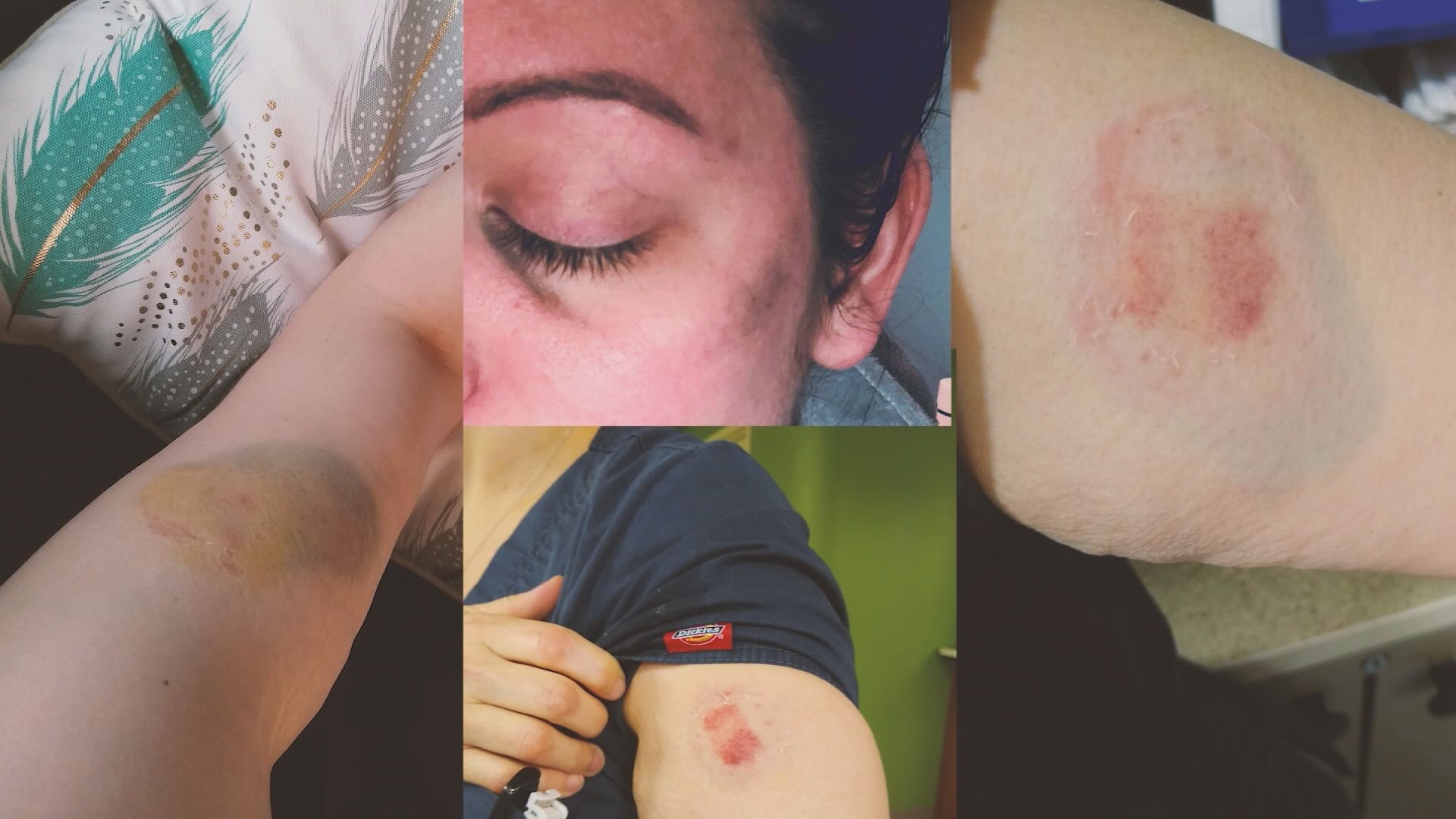GREENSBORO, N.C. — Across the country, and in Triad, nurses are breaking their silence. They are sharing their stories, showing their wounds and demanding safer workplaces.
During a months-long investigation, nurses and other health care workers spoke with Tegna investigators about their experiences with violent patients.
“We are crying out for help,” said nurse Lisa Lockhart. She has experienced violence firsthand, being choked with her stethoscope by a patient.
Dozens of nurses and other health care workers described being assaulted at their jobs. Many have cited the opioid crisis, understaffing and lack of support for complaints as some of the drivers behind the attacks.
“Everyday, everyday something occurs. I have not heard of a single institution where this does not happen," said Dennis Taylor. He works at Wake Forest Baptist Health and is the president of the North Carolina Nurses Association.
“I was struck by a patient," Taylor said.
In North Carolina, it’s hard to know how often this happens. We’ve heard stories of attacks from hospitals all over the state, but there’s no requirement for medical staff to report the violence. So there’s no hard numbers. We do know it's common enough nurse aren’t surprised when they hear about an attack.
“There’s that feeling that may just be part of the job. And it shouldn’t be," Taylor said.
Governor Roy Cooper signed a law a few months ago which makes assaulting a healthcare worker a Class D felony. That means you could go to prison for up to 13 years.
Nurses say that’s a help after the violence, but the focus needs to be on prevention. So the North Carolina Nurses Association has been working on training for staff.
“It’s really important for the providers themselves, the nurses to develop good communication skills, manage the patients’ expectations. And, be able to have a good awareness about what’s going on around them," Taylor said.
Hospitals are doing their part too. Many creating new policies to help protect staff. For example at some places patients who are violent, get stickers outside their rooms and internal documentation. Plus panic buttons around the building. And safety huddles at each shift change.
Every little bit helps, because it’s clear this isn’t a problem that can be fixed in a flash.
“It’s an incredibly huge issue," Taylor said.
2 Wants To Know has also investigated workplace violence against teachers.
And ways you can help protect yourself in any job where you interact with the public.
We're going to keep digging looking for solutions. If you've had any experience with workplace violence, please send a message to 2 Wants To Know's Ben Briscoe on his facebook page.

